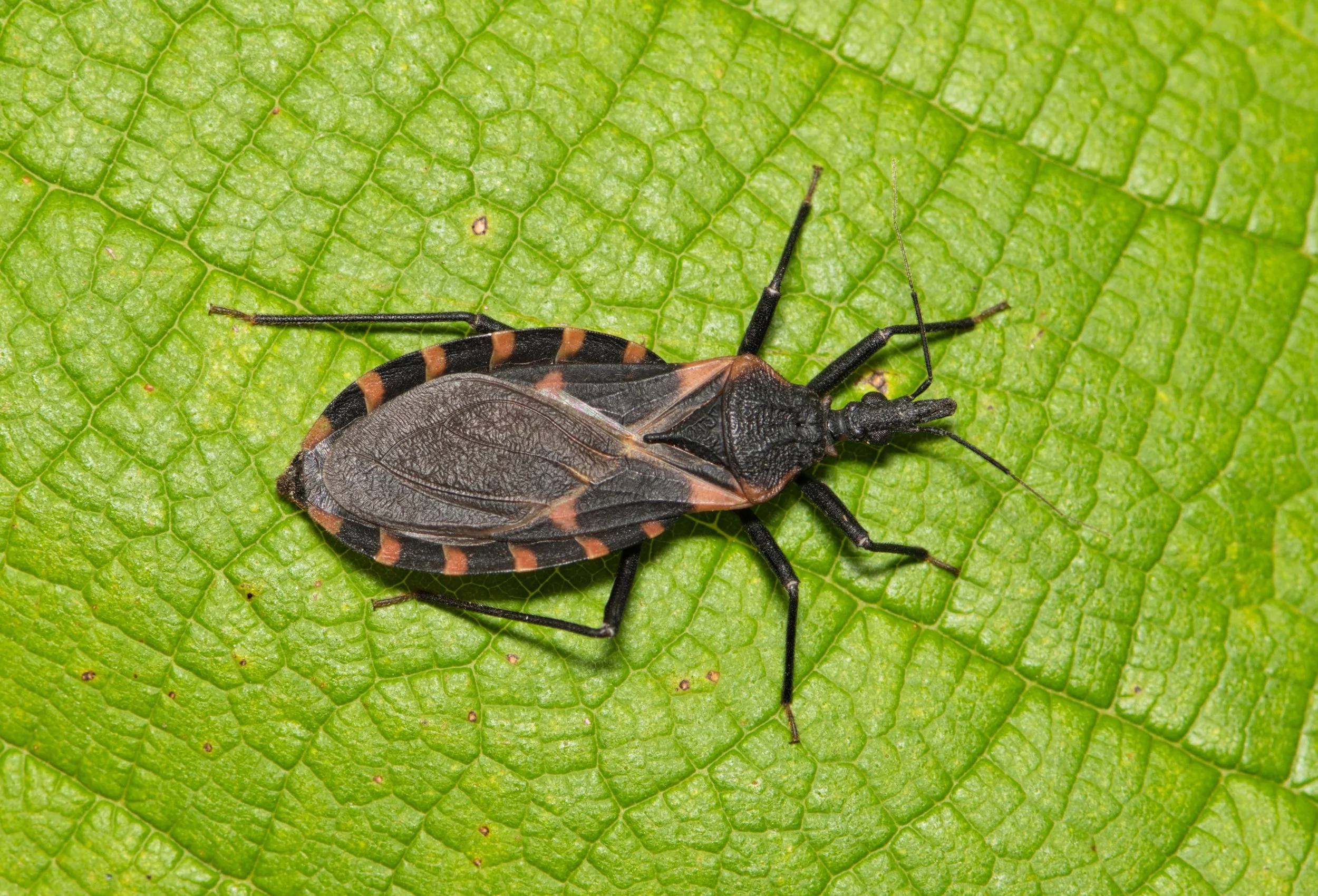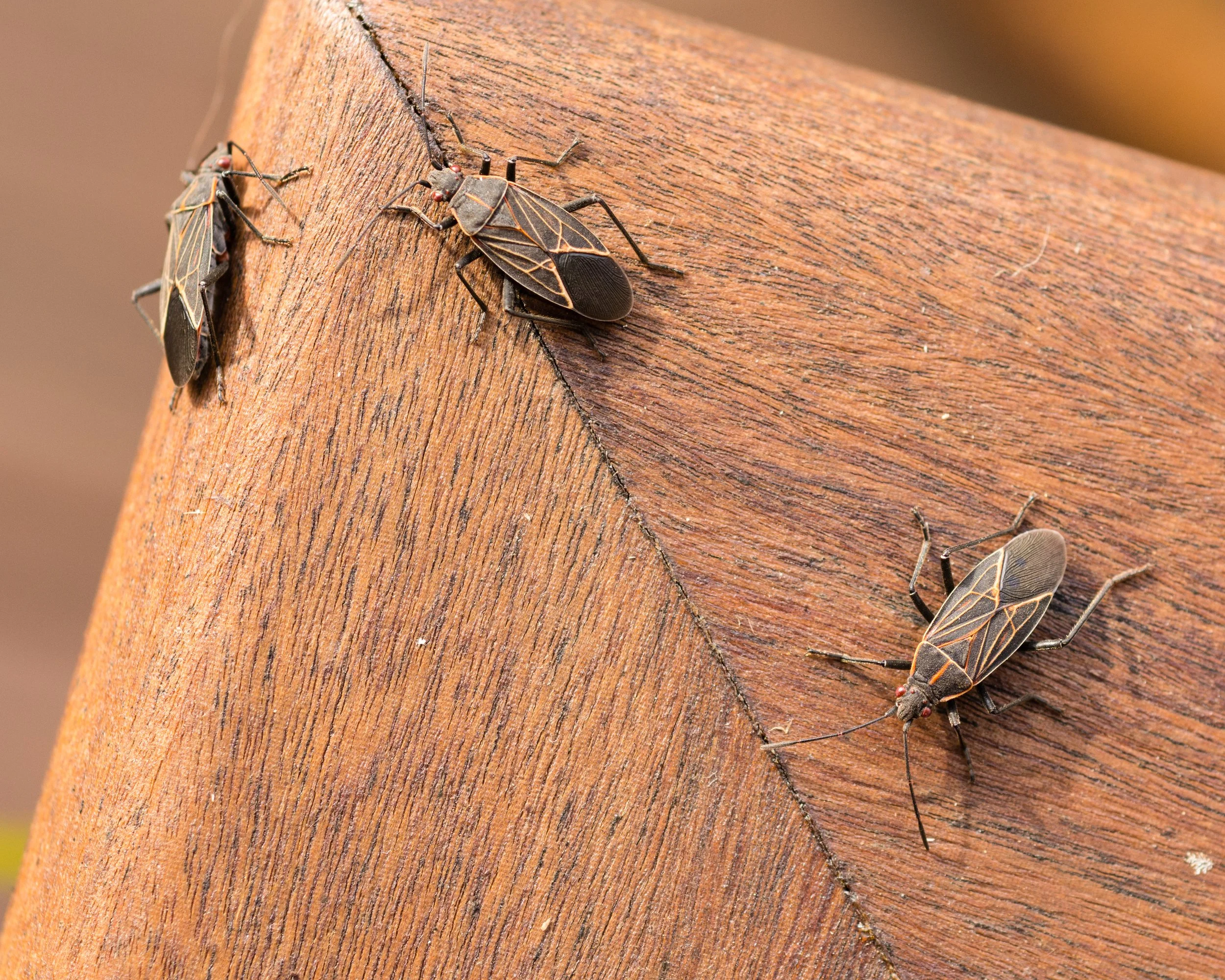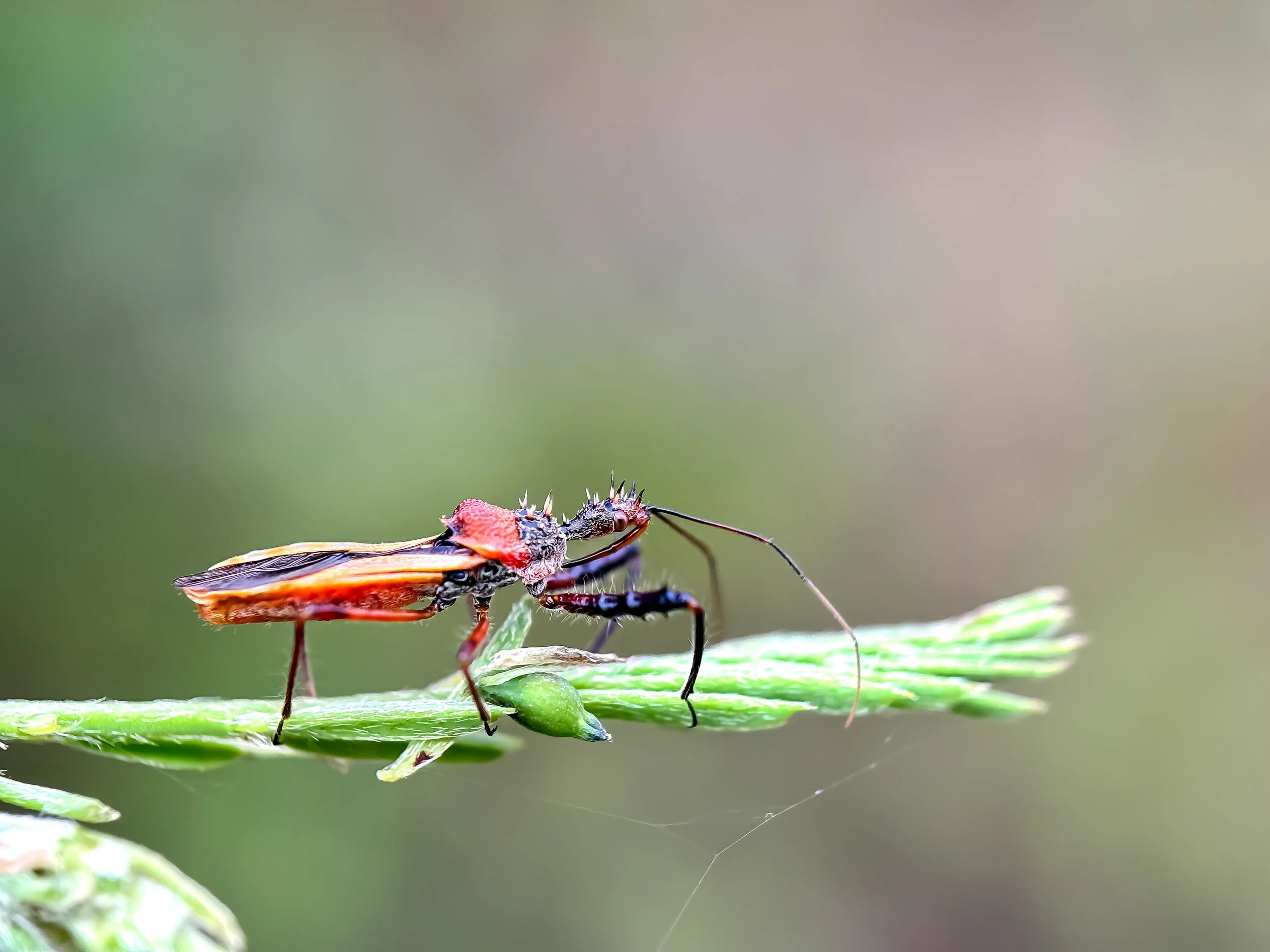What Are Kissing Bugs? Identification, Risks, and Prevention in Southern California
Kissing bugs share some visual traits with other common insects in Southern California, especially boxelder bugs and assassin bugs. Because these lookalikes often appear around homes at the same time of year, confusion is common. Knowing what sets each species apart can help you avoid unnecessary worry—or recognize when a true health risk is present.
How to Tell Kissing Bugs Apart From Similar Insects
Kissing Bugs
Kissing Bug
Kissing bugs are the ones to watch for. They’re larger, darker, and have a distinct elongated head designed for blood-feeding. They tend to hide during the day and emerge at night to feed on humans or animals. Their bites can transmit the parasite that causes Chagas disease, making them a serious concern in regions where they’re established.
Size: ¾–1¼ inches
Color: Dark brown or black with orange or red edges
Head Shape: Narrow and elongated
Feeding Habits: Blood-feeding
Risk Level: Can transmit Chagas disease
Boxelder Bugs
Boxelder Bugs
Boxelder bugs are often seen clustering on sunny walls, siding, or windows in fall. While their dark bodies and red markings can resemble kissing bugs, boxelder bugs are completely harmless. They feed on plant sap, not blood, and may only cause cosmetic staining if they gather indoors.
Size: About ½ inch
Color: Black with red or orange veins
Head Shape: Short and small
Feeding Habits: Feed on plant sap
Risk Level: Harmless nuisance
Assassin Bugs
Assassin Bug
Assassin bugs are beneficial predators that help keep other insect populations in check. They’re slimmer than kissing bugs and usually stay outdoors. Though they can bite if handled, their bites are defensive rather than parasitic. These bugs shouldn’t be feared but handled with care.
Size: ½–1 inch
Color: Brown or black with a narrow body
Head Shape: Narrow and angular
Feeding Habits: Prey on other insects, though they can deliver a painful bite
Risk Level: Usually harmless
Identifying these distinctions can save time, reduce panic, and help you contact a pest professional only when necessary.
Kissing Bug Prevention Tips
Because kissing bugs are attracted to warmth and light, preventing them requires both home maintenance and environmental awareness. The goal is to make your property less inviting and block any potential entry points.
Seal cracks around doors, windows, and foundations.
Repair or install door and window screens.
Store firewood off the ground and away from the home.
Clear brush, leaves, and clutter near the foundation.
Keep outdoor lighting away from entry points.
Encourage pets to sleep indoors, especially during warm months.
Inspect bedrooms, basements, and pet areas regularly.
Regular upkeep and simple adjustments can dramatically lower the risk of an encounter, particularly in suburban and foothill areas near wildlife habitats.
Professional Pest Control for Kissing Bugs
Even with preventive steps, it’s possible for kissing bugs to find their way indoors. Because of their ability to transmit disease, professional pest control remains the most dependable approach to long-term protection. ProCraft Pest Control combines inspection, targeted treatment, and prevention to ensure homes stay secure year-round.
Identify true kissing bugs versus harmless lookalikes.
Apply targeted treatments to indoor and outdoor hiding areas.
Recommend exclusion and habitat reduction strategies.
Provide ongoing monitoring and peace of mind.
Professional help ensures you’re not only removing active pests but also preventing future infestations with proven exclusion methods and local expertise.
I am about 40ish years old and happily married with 5 kids. I started in this industry when I was 20 and created ProCraft in 2009. I grew up on the East coast, namely Pennsylvania. I like 80's movies and coffee (black..). I spend most of my free time hiding from my family (bathroom, garage)



